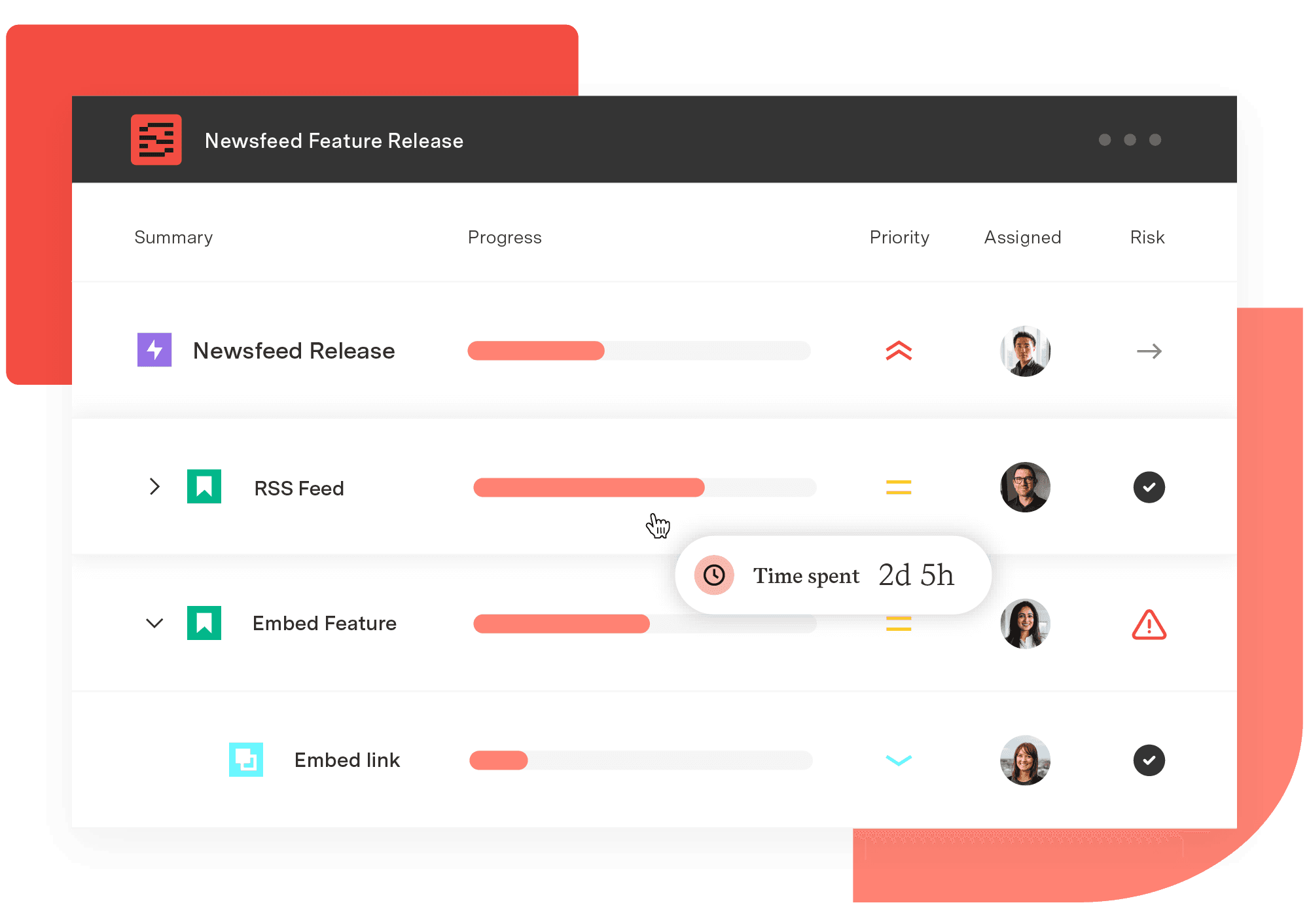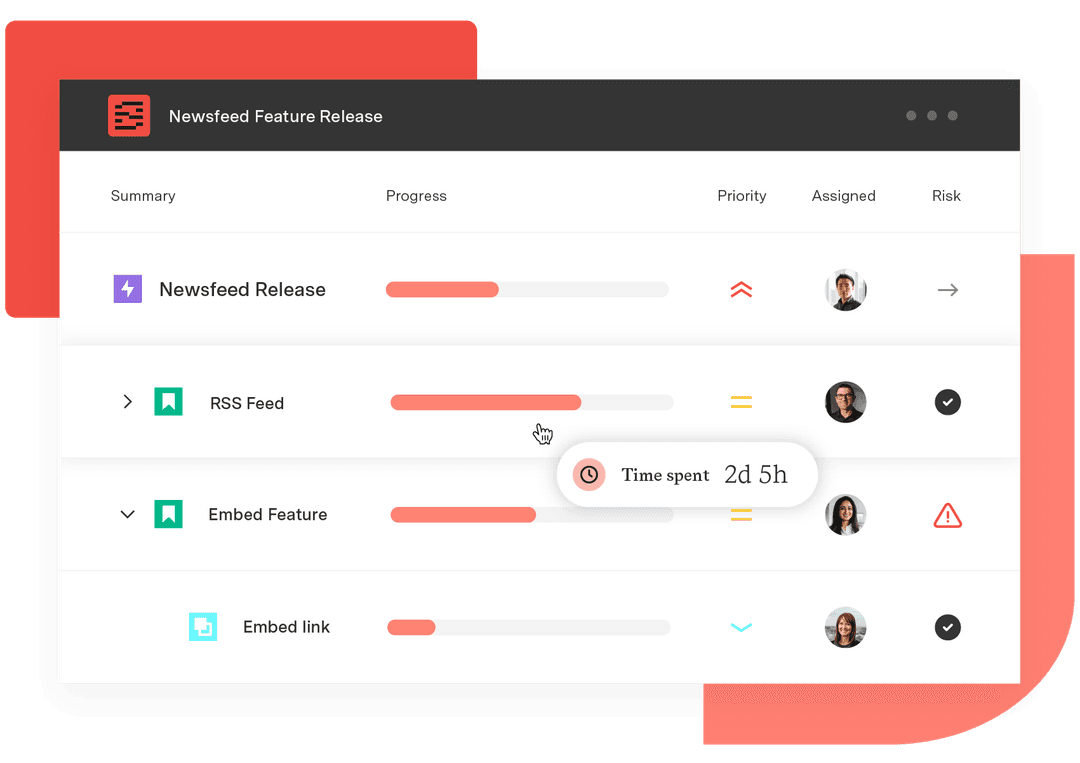Balancing 500 active projects, with 30,000-line project plans, using Structure
Tempo Team
About the customer
Five hundred active projects are a lot for a team of 18 PMs to handle. When each project has over 10,000 deliverables, it would be impossible to manage them without advanced tools, processes, and well-designed automation.
This case study profiles one of the Big Four professional services companies, which has over 300,000 employees around the world, and is written with their approval. Let’s call them Apex Consulting Group (ACG). Within ACG is an Atlassian Center of Excellence, an advisory practice that consults customers on large-scale technical engagements – such as SAP or Oracle transformations.
As they guide customers on what they call the “big leap to the cloud,” ACG is focused on scalability, automation, and making complex work effortless.
Challenges of scale, adoption, and adaptation
ACG is involved in large-scale client projects that take months to complete and involve multiple departments. At the helm of the Atlassian Center of Excellence is a project management technology consultant – we’ll call her Connie Sultan.
She leads a team of Jira wizards who keep enterprise projects running smoothly. They consult clients on how to leverage technologies, drive adoption, understand new features, adopt AI capabilities, and move from data center to the cloud. They also administer the Atlassian and Tempo products that are built into every client project.
“When we’re in pursuit of a new client, we bring Structure PPM to the table right from the beginning,” Sultan notes. “Demo projects set off with the best of the best so we can show them the art of the possible.”
The Jira wizards dive in and show prospects every feature and capability. “It’s based on doing this over and over again for years,” Sultan says. “We have templated project delivery for specific types of client projects.”
Her team grapples with challenges of project scale, technology adoption, and change management on the client side.
Challenge 1: Scale
When ACG made the jump from server to data center, their growth exploded. Already one of the world’s largest professional services companies, they were now handling even more complex client engagements.
“Right now we have 35,000 users, half of whom are client users,” Sultan says. “We’re working on 500 active projects at any given time – and these are large-scale projects, multi-year transformations, often with 10,000 or 30,000-line project plans. Teams are testing over a million issues in Jira, with 200,000 of them updated daily.”
Sultan’s team quickly realized which apps could handle massive scale and which could not. If there are two apps that can do similar things, Sultan notes, “We’re going to choose the one that can handle massive scale and gives us robust permissioning so we can control which features can be used by whom.”
“Just as importantly, we realized which companies could provide the support relationship we needed to make it work.”
Challenge 2: Adoption and change management
Once ACG wins a new client, it’s time to begin the onboarding process – and getting to value quickly is the top imperative. Not every client is accustomed to Atlassian products, so Sultan’s team has to bridge the gap and make clients confident that they can do the same work.
“We make them comfortable using Jira to do the same tasks they’re accustomed to in a tool like Microsoft Project, while gaining the collaborative features of Jira and Tempo tools – all the reasons they’re moving away from Project,” says Sultan.
Challenge 3: Multi-tenancy
With over 500 active client projects, operating in the cloud brings big challenges. One is how to handle cloud transitions and multi-tenancy.
“As a client services company, we have to keep clients private from each other – which is a challenge in a collaborative tool,” Sultan observes. “It’s not just keeping data separate. You have to think about shared objects, names of dashboards, names of Structure plans and Structure views; any user field being able to see another user in their email domains, or teams in the cloud.”
AI features are an additional challenge. “How do we segment the AI knowledge base?” Sultan asks. “We’re hard at work solving those problems, and we’re building an orchestration application in Atlassian Forge to orchestrate across all of those sites.”
Solving the “great leap to the cloud” with Jira and Structure PPM
ACG built its cloud architecture with client privacy top of mind. Multi-site architecture keeps clients in their own sites, not just their own projects.
“My team of 18 Jira admins who work in a data center environment has to orchestrate over 1,000 separate sites,” says Sultan. “They manage installation, templated configurations, Structure plans, automations, Jira app configurations, dashboards, and maintenance across all of those sites.”

Atlassian has been closely involved in helping ACG solve these challenges.
“Atlassian has built capabilities specifically for us – like site isolation that keeps users isolated too – which they’re now rolling out to general availability,” Sultan says.
Standardizing project deployments with Structure PPM
Having worked with clients of every size, maturity level, and in every industry imaginable, ACG has an extraordinary wealth of knowledge on problem solving.
“Each customer is unique, but the problems they’re facing are not that unique,” Sultan remarks. “Their strategies and priorities and maturity are unique. We use a modular approach, which is built around templates that provide everything customers might need.”
At the core of those templates is a best-of-breed toolset.
“Structure PPM is absolutely critical for us and has been the primary driver of our relationship with Tempo. Structure is front and center in our project delivery, across all types of projects that we do in Jira. It is put forward as a critical differentiator for us when we deliver work.”
ACG’s templated packages include:
Project configurations
Project delivery methodologies and blueprints
Business process master lists
Structure plans
Structure dashboards
Work breakdown of materials
Jira automations
“We’ve built out templates for agile delivery, requirement traceability matrices, and end-to-end testing, and we rely on Structure to do all of these things,” says Sultan.
Standardization and modularity are essential to ACG’s ability to deliver excellence on large-scale projects.
“Using our modular approach means the customer doesn’t have to learn what we’ve already learned,” Sultan points out. “As we approach each customer, we decide which pieces of the template apply to their unique case, and meet them where they are.”
Results: A modular, flexible system built around automation and robust permissions
Sultan’s team, and ACG as a whole, use Jira and Tempo for predictive project plans, agile and testing teams, requirement tracing and more.
A few things made Structure PPM an integral part of the ACG toolkit.
“First, you talk about modularity and flexibility, being able to meet people where they are,” says Sultan. “It’s important for us to not just try to recreate Microsoft Project – we have to think about the core capabilities of project planning and the core capabilities of Jira.”
ACG’s Atlassian Center of Excellence is highly invested in automating as much as possible.
“When you think about the scale of our work, we can’t possibly do it all manually with a team of 18,” Sultan points out. “We have to be able to create end-to-end sites, build projects, install and configure apps and then mobilize and get to value quickly. We need to do it all via API so we can get in there with the clients and deliver work.”
Automation
Automation is a core requirement for this type of work. Sultan’s team tackles enormous project plans filled with finish-to-start dependencies. They have to use auto-scheduling and automation to notify successor assignees when the predecessor task is completed.
”We use Structure in combination with Jira automation, and heavily leverage Structure formula columns,” says Sultan. “We have tasks that are scheduled down to the minute, since we’re running through a 10,000-line project plan in three days. That’s the scale where we’re meeting clients.”
Permissions
Structure’s flexible permissioning lets Sultan’s team control the availability of specific app functions. Jira admins are able to decide which features internal and external users can use – down to the project and role level.
“Structure gives us the flexibility to match clients' methodologies, views, and flexible permissioning.”
How is the professional services company planning to expand its work with Tempo?
“I am really excited to hear about Tempo’s forthcoming AI-assisted scenario modeling,” says Sultan. “That’s something we would absolutely use. Scenario modeling and sandboxing are a huge need for us.”
Want to get all your epics managed in one place?
Try Structure PPM

